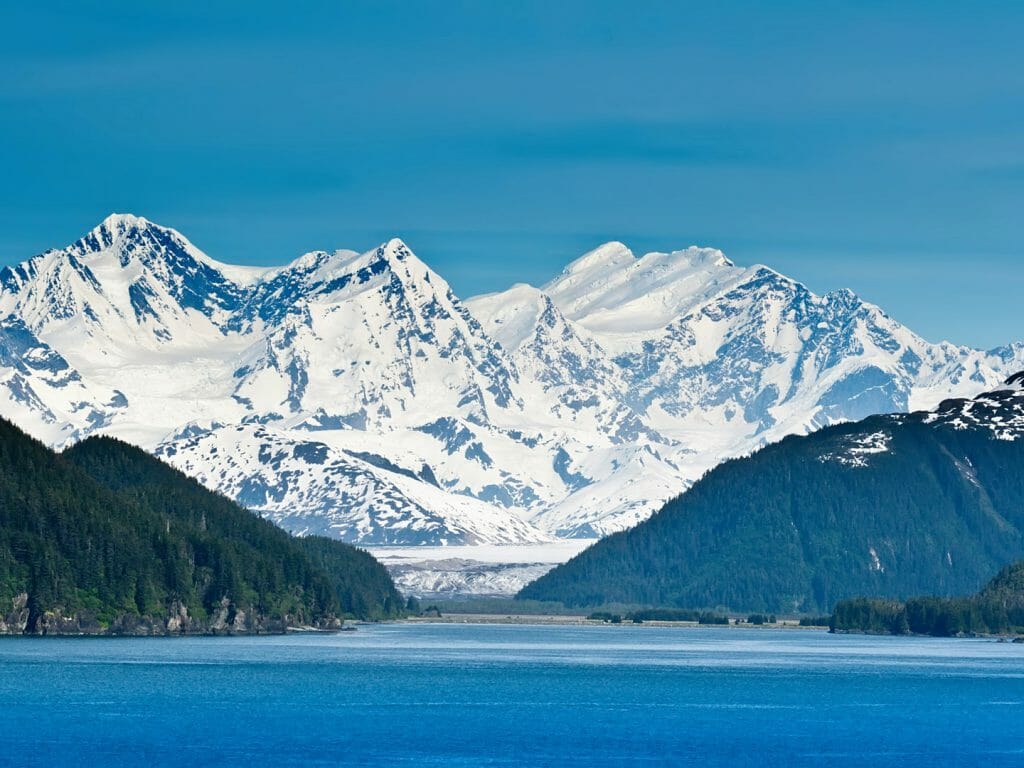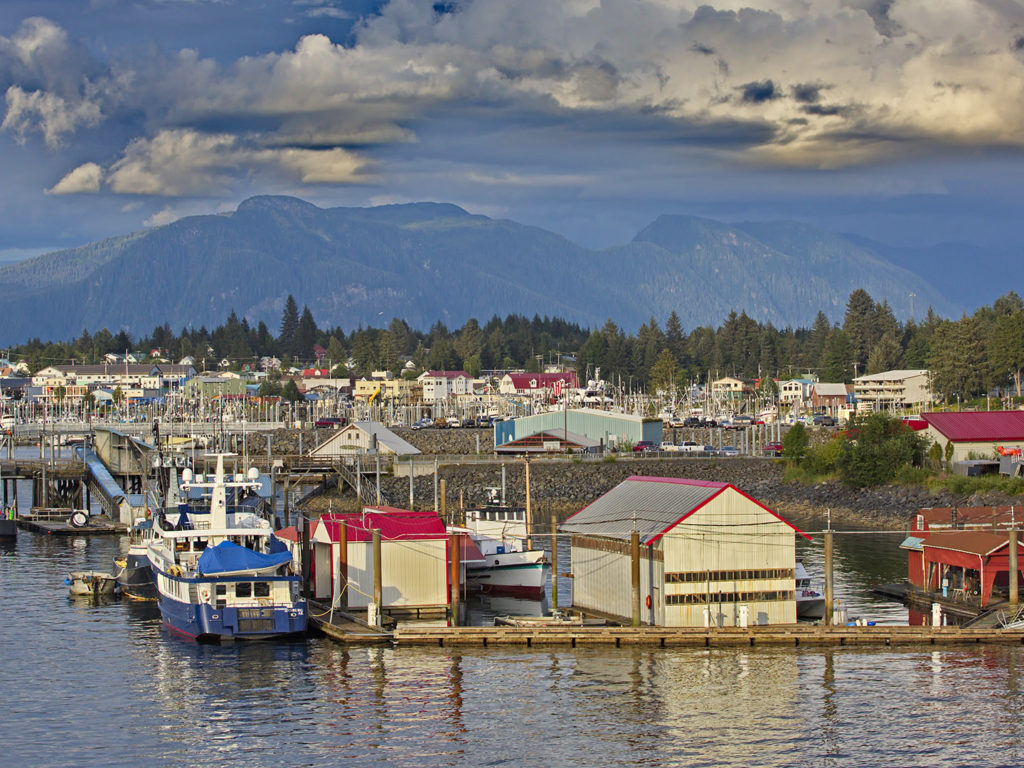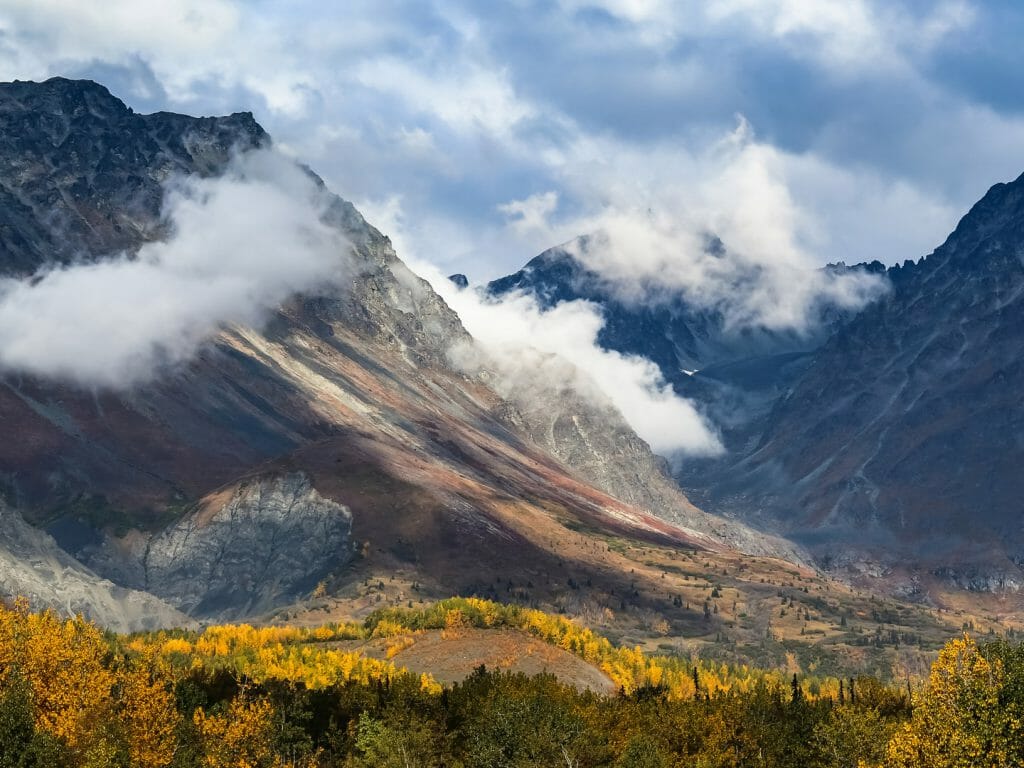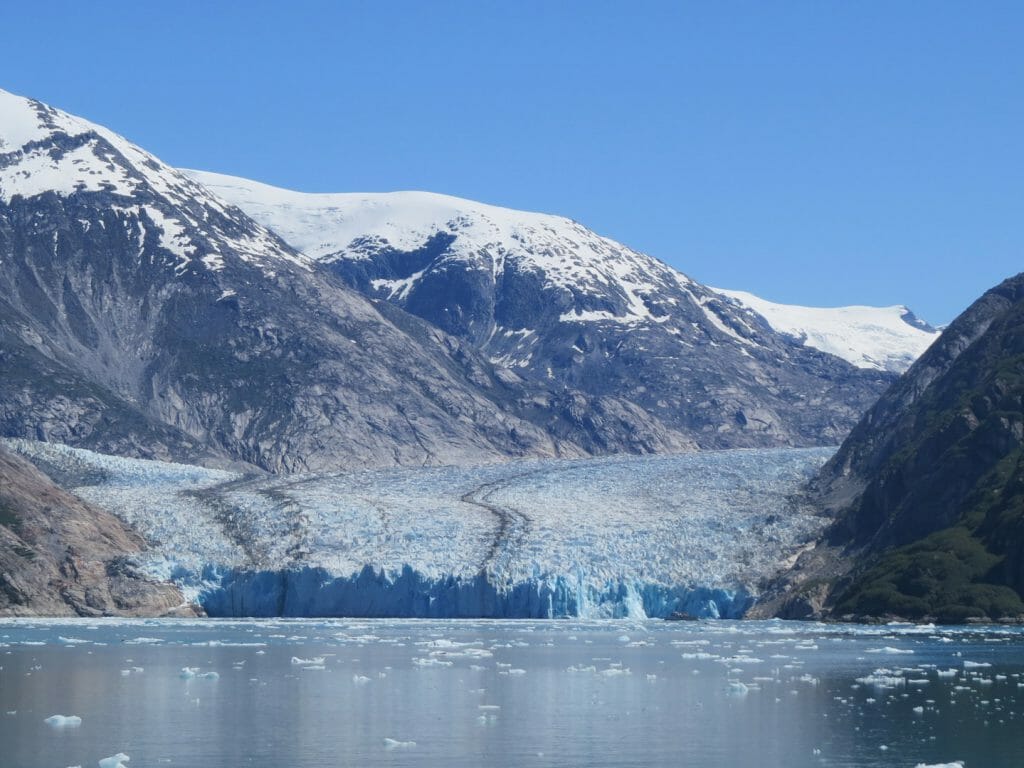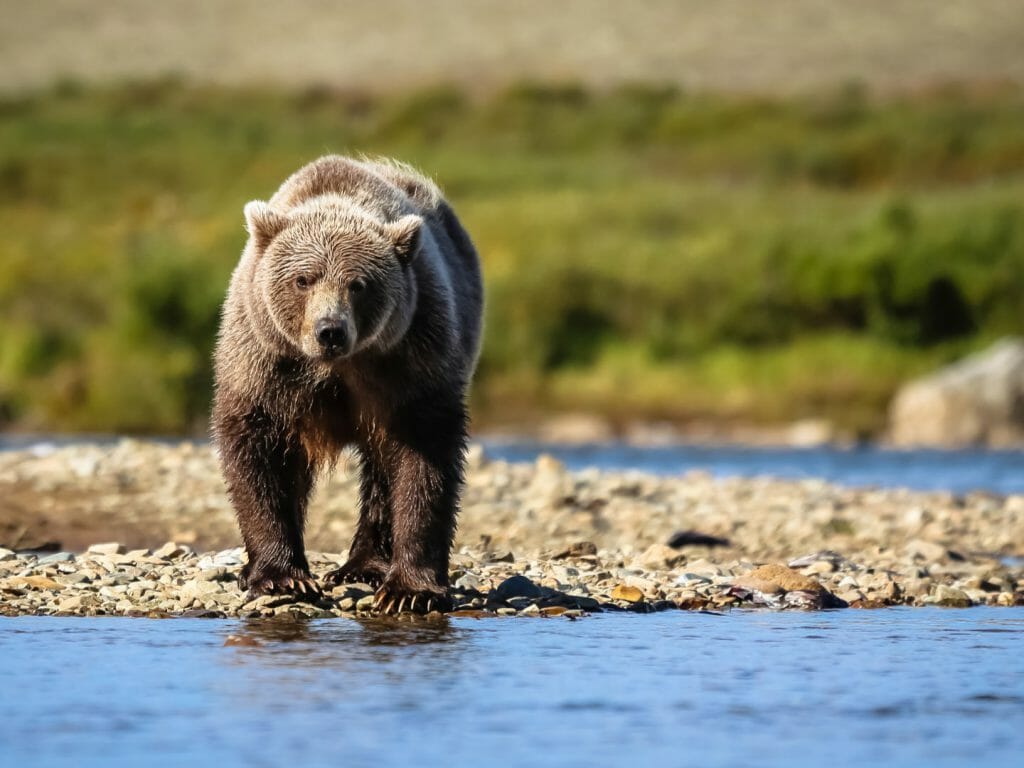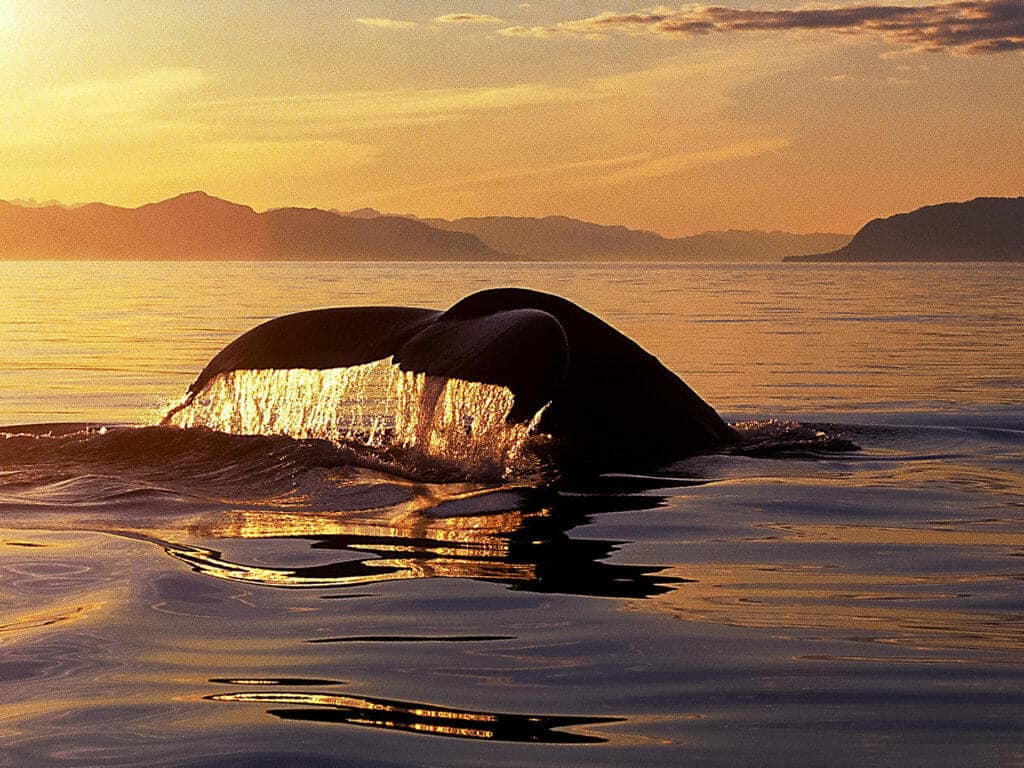The float plane roars and Keller eases back on the throttle. The immensity of the scenery below unfolds. Primordial nature. Wilderness. Muted hues. We are flying over Kodiak Island, Alaska’s emerald isle. The name conjures up images of mystery, grandeur and power. At the heart of that mystique is the mighty Kodiak Bear, that I have come to see.
The drama of the landscape – impressive white peaks, deep blue fjords and vibrantly green valleys – needs no explanation. Keller’s unerring eye points out the less obvious. Gulls on a ball of herring. Mountain goats with their shaggy coats of pure white. A rainbow to our left, dark clouds to the right and sunshine ahead – the vagaries of Kodiak weather.
We land on the remote Karluk Lake, a lake only accessible by float plane. There are some 3,500 bears in the Kodiak Archipelago, which equates to almost one bear a square mile. The 12-mile-long Karluk Lake holds the highest density of bears in Kodiak and thus the world.
We take a boat across Karluk Lake. The black dots moving across the lakeside scouring the water’s edge take shape as Kodiak Bears, the largest bears in the world. The legend of the bear is that the Kodiak Bear is touted as the world’s largest carnivore. The reality is that they are omnivores and spend more time eating grass, plants and berries than meat.
Indeed, few bears expend the time or effort necessary to chase and kill mammals. They are opportunistic. Karluk means fish in the local Alutiq language. It is well-named. The waters are teeming with salmon. Every year hundreds of thousands race the rivers to spawn. For the bears it is a feeding frenzy as they fatten themselves up for the winter months.
We see several bears patrolling the beach. The sub-adults raise their head in suspicion at the alien sound of the boat, sniff the air and retreat into the sanctuary of the long grass. But one, a large sow, holds her ground and enjoys the beach to herself. We float just offshore as she continues her progress and I listen to the soft crunch of the slate beach underpaw. She spies a floating salmon and scampers forward to scavenge.
Bears don’t expend energy unless they have to. Yet the slow, deliberate walk of the bear is deceptive: they move with disarming speed. Their turn of pace as they splash through the water in pursuit of a salmon is sudden. And at the same time amusing.
Jen my guide, an Alaskan ranger, asks, “Do you want to go for a walk?” Surprised but thrilled, I reply with an emphatic yes as she beaches the boat and we head out into bear country.
There is evidence of bears. Scat of varying sizes and consistency. Large paw prints. The size of the claw marks is worrying. The detritus of salmon – bones, scales, entrails, heads. Jen is armed. She carries a twelve-gauge pump-action shotgun which as Jen puts it, “That’s a whole lot of lead. Quite some stopping power.”
We sit on a steep bank on the side of the River Thumb. The river gurgles noisily downstream as huge red salmon struggle upstream. For some it is too much and they seek respite on the edges of the river where the flow is less strong. The solitude and silence are striking. Broken only by the head-turning splash of salmon. No bears.
Bears have no schedule and so we decide to make our own and walk further upstream to Lake Thumb. We work through long grasses, fireweed, Cottonwood trees, willow and undergrowth. A mosaic of colour. Jen doesn’t want to surprise a bear so she quietly claps her hands and talks to anything that might be out there, “Hey bear.”
That’s the great thing about walking around the corner in a truly out of the way place such as this: you never know what’s going to ambush you. Suddenly the ground reverberates and we see a bear break cover in a lolling run. The tension is broken by the wailing cry of a fox that to my untutored ear sounded like a bird.
We stand by the lakeside. The mountains around us soar some 2,500 feet above the lakeshore in a variety of greens, orange, brown and russet. I sit and marvel at my surrounds. One mountain with fissures created over millennia by raging streams that resemble a bear’s claw marks. Another with vertiginous slopes that beg to be climbed. The brilliance of the Common Merganser. Six ducks fly overhead in uniform flight. A kingfisher darts along the water’s edge. Apart from that stillness. The isolation is intense.
We spot a bear on the far side of the lake, the eleventh bear that we have seen that afternoon, and decide to return to the head of Lake Karluk. A fox saunters past a large salmon in her mouth. She seems unconcerned by our presence. So much so that her kit, a young fox of some four months, emerges from the undergrowth to relieve its mother of her catch and greedily gorge on the salmon in front of our eyes.
A sub-adult comes around the bend in the river. He spots us, raises his nose sniffing the air – a bear’s sense of smell is one hundred times that of a human – doesn’t recognise what he smells, does a quick about face and retreats quickly into the long grasses. We resume our silent vigil.
Socially bears are solitary creatures, the exception being mating pairs and sows with cubs. The bears do not have a territory that they defend, but instead have a home range that they will hunt year after year. Because of the diverse quantity of food on Kodiak Island, the bears have some of the smallest home ranges in the world. This brings Kodiak Brown Bears into much higher concentrations than their solitary nature would suggest.
And suddenly there are bears in profusion. Upstream two young sub-adults scour the edge of the river. Downstream a large sow. In the distance at the head of the lake two young cubs frolic on the beach as their mother combs the water. I watch their shoulder swagger walk, the shuffle of their backsides and their heads moving from side to side.
I tap Jen on the shoulder excitedly. Twenty feet to our left a bear was negotiating her way down the bank into the river. She crosses the river and patrols the edge of the river preying on the weak.
Jen whispers, “That’s Dark Lady. She is an adult female in her prime.” I marvel at the condition of her coat and am in awe of the rippling muscle beneath it. I notice the pads of her feet as she wades her way downstream. We watch her with fascination.
She stops. Crosses back to our side of the river and begins a watery plod upstream. Remarkably she stops just beneath us, a mere ten feet away. She begins to feed on a salmon. The ripping of skin, the tearing of flesh and the crunching of bones is audible, a tribute to her raw strength and razor-sharp claws and teeth. She looks up at us. Her red eyes revealing the overwhelming indifference of nature. A cursory look at us and she resumes her noisy munching.
“If they look at you for a long time then you know it’s serious,” whispers Jen with disarming understatement.


